The weather in Colorado is quite unpredictable. Very warm days can be followed by sudden blizzards. The agricultural community there has to deal with these temperature swings and find a way to survive them. At the same time, the sun shines on this state for more than 300 days per year, making it particularly suitable for outdoor grows. However, it is necessary to find a way to lengthen the season in order to harvest at the right time. This is exactly the operation that WAAYB carries out in its greenhouse, before putting the seedlings into the open field. WAAYB (Wind Always At Your Back) is a vertically-integrated hemp producer based in Colorado.
“We grow high CBD industrial hemp. We harvest and process ourselves,” says Anson with WAAYB. “We thought there was a gap between people providing high CBD flowers. We saw a hole and we wanted to fill the hole by providing high-quality organic CBD oil.” Scott adds: “We are totally vertical integrated. We wanted to find a solution that goes from us, the growers, to the consumer.”
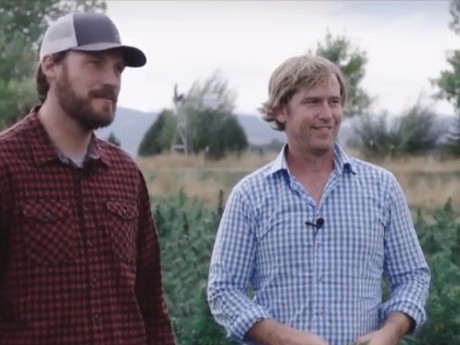
Anson and Scott
The ‘funny’ Colorado weather
As mentioned, growing hemp in open fields under the Colorado weather can be extremely challenging. That is why WAAYB starts the cultivation process in a greenhouse, the purpose of which is to start seedlings off in the best way possible. “We start in the greenhouse to kick the season off before we move to the actual ground,” Anson explains. “We make use of greenhouses as we have a short growing season in Colorado because of the weather. It gives us a one-month head start with a warm safe growing environment for the plant.”
They continue describing one of the main problems in growing in this state: “Here in Colorado we have to mitigate the hail. That is why we use the greenhouse to lengthen the season: when hail would occur, plants coming out of the greenhouse are already quite resistant and can survive these adverse conditions.”
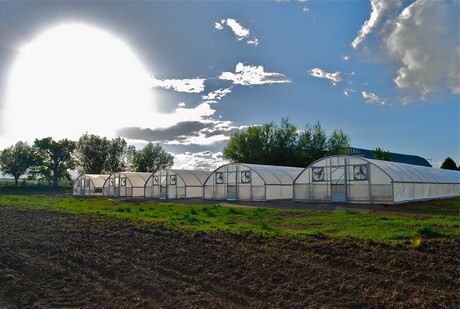
The reason why Anson and Scott start within a greenhouse goes beyond the ‘simple’ lengthening of the season. “Carrying out such operations allow our seedlings to be strong and healthy in order for them to resist the ‘swinging’ Colorado weather. For instance, we eliminate any germination-related issues in the greenhouse.”
“We are certified as an organic producer by the USDA. These greenhouse operations add a step and are more work, but eventually they definitely pay their dividends,” Scott points out.
Putting seeds in the ground the easy way
WAAYB’s fields spans more than 100 acres. Managing such a large portion of land requires careful planning and constant optimization, which is exactly what Scott and Anson aim for. “The hemp seed is a very delicate and expensive seed. It is necessary to handle it with care, especially when it comes to putting it into the soil,” Anson states. “When we started this activity, we carried out this operation manually. However, we constantly look for new solutions and technologies that allow us to be more efficient and to optimize our SOPs. That is why we opted for the Speedy Seeder vacuum seeder.“ Speedy Seeder is a company that has been active for more than 30 years in this sector. It develops and manufactures seeder solutions for every type of op. Recently, the company has received many requests by hemp growers, and WAAYB is among them.
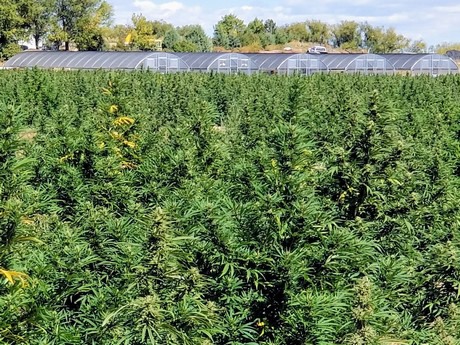
“We use a vacuum seeder by Speedy Seeder that plants 50 seeds every 30 seconds. It is a vacuum seeder that lays 50 seeds out on a vacuum and that vacuum is released dropping 50 seeds on the 50 cell trays. This year we are going to run an automated flat filling machine on a vibration table, which will increasingly optimize our operations.”
Anson continues explaining why he resorted to Speedy Seeder solutions: “Hemp seeds are very expensive, and most of the machines are not articulated enough to handle one seed at a time, and even the ones that do it are very expensive. That is why we opted for Speedy Seeder. We want to optimize our processes, that is why we are going to use that automated platform. That alone can do the job of 7 people.”
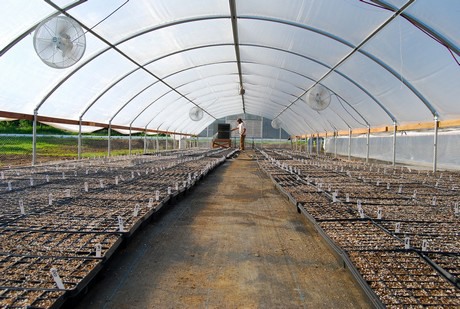
Although they eventually grow hemp in the open field, Anson and Scott took into consideration every small detail when they found themselves in the process of designing the greenhouse, especially considering the ‘crazy’ Colorado weather. “Water, temperature, humidity and the environment are the things that need extreme attention. When the greenhouse is either open or closed, you need to keep the temperature constant. Here in Colorado we have huge temperature swings, and we need to keep the temperature even because you want a warm seedbed, for instance.”
Going open field
Once operations in the greenhouse are done, Anson and Scott move to the open field, where a whole different set of challenges comes into play, and they have learnt more than a thing or two along the road. “It takes a lot more manpower and bodies out there than you would think. You must rely on a solid team and solid SOPs, especially when the harvesting window is short. Some of our neighbors here didn’t even get the crop out of the field at all. We hired a team of experienced growers that have education in the cannabis industry and farming. We hired a reputable company to give us early ideas to adjust our growing needs. These are only a few of the things that allowed us to be successful despite the adversities.”
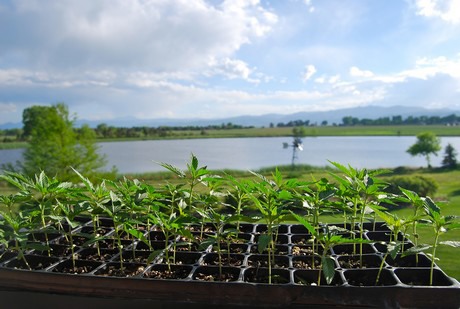
Scott takes care to remark that “There is really no shortcuts or easy ways.” He continues: “It still is a very manual process. One has to approach this crop keeping in mind that it is really labor intensive. There are no shortcuts. Take your time and do not rush to harvest. At the same time, you must keep the plants protected. It is very difficult; it is crucial to time everything right and work with mother nature.”
For more information: WAAYB
WAAYB
waayb.com
